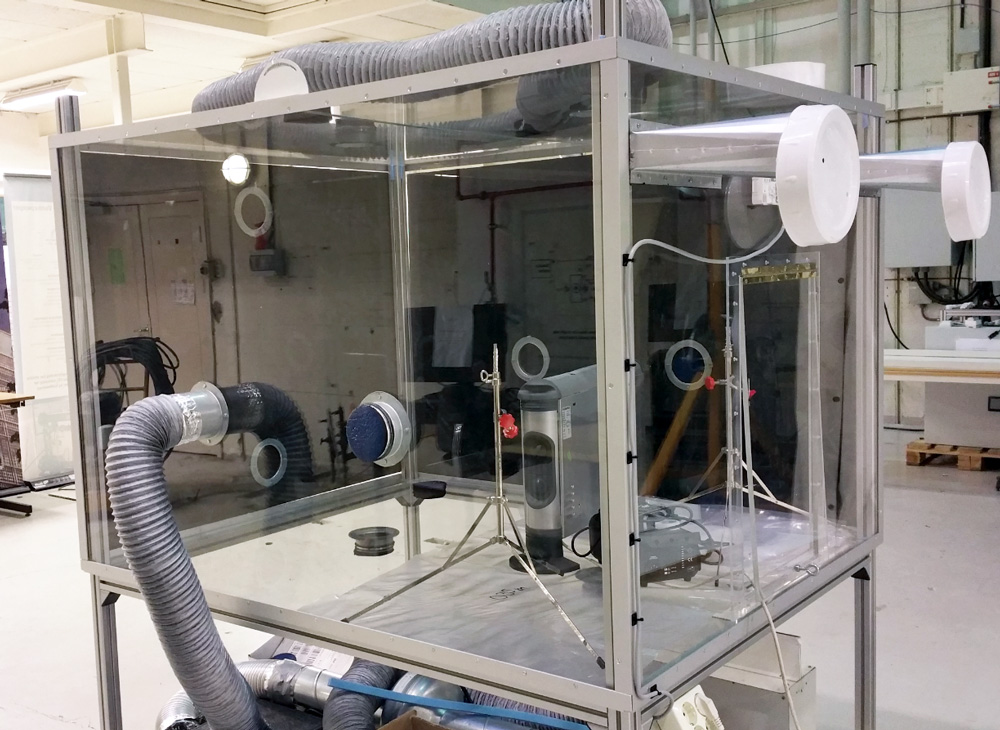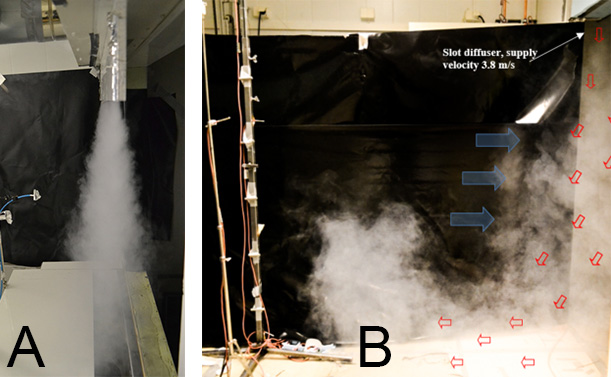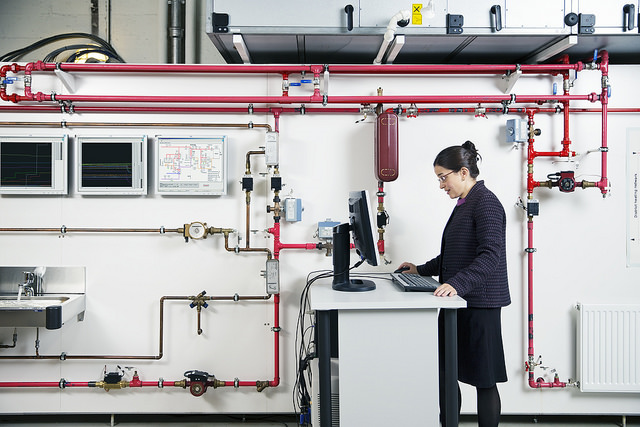Energy and Indoor Environment Lab - Department of Energy and Process Engineering (EPT)
Energy and Indoor Environment Laboratory
The Energy and Indoor Environment laboratory facilities are located in the first floor of Varmeteknisk laboratory at NTNU. The laboratory has been developed by Prof. Hans Martin Mathisen (Sustainable Energy Systems Group), Associate Prof. Natasa Nord, and Prof. Guangyu Cao. The Energy and Indoor Environment Laboratory is equipped with several rigs and test facilities for performing various experimental studies within energy efficiency, energy supply, thermal comfort, and indoor environmental quality.
MINI test chamber
A small-scaled chamber, the MINI test chamber dedicated to both research and teaching purposes regarding the airflow distribution in a room, has been developed at EPT. Contact person: Professor Guangyu Cao.

The chamber has a dimension of 1.2m (width) x 1m (height) x 1.5m (length) and is equipped with various ventilation components. Various airflow distribution may be visualized and measured in this chamber. Different combination of air supply and air extract can be tested and examined with the presence of an internal heat source and a pollutant source. In addition to research, the chamber may be used for teaching purpose as well. Students may continue to use the mini DEMO chamber in their project work and master project after a relevant course.
Airflow distribution of downward plane jet
Rigs of downward plane jets for testing a new type of ventilation system, protected zone ventilation have been developed at the Department of Energy and Process Engineering. Contact person: Professor Guangyu Cao.

from a local exhaust
B:The downward plane jet and the
entrainment of ambient air
The laboratory has facilities to study different airflow patterns and ventilation systems. Figure shows two photos of the study of a downward plane jet. The facilities may enable various experimental setups to study the performance of a downward plane jet in reducing the transmission of pollutants and decrease the temperature stratification in a room. The two photos show the airflow partners during the experiments.
District Heating Consumer Substation
A district heating consumer substation has been developed for education and research purposes, to increase our knowledge on the way to smart district heating and smart energy systems. Contact person: Associate Professor Natasa Nord.
The plant presents a consumer substation and provides heat for three users such as space heating, ventilation, and hot tap water. A consumer substation is a usual interface with the district heating system for one or several buildings. The plant is developed as an indirect connection to district heating. In this indirect connected solution, heat is delivered via heat exchangers to the three users. To utilize better the available temperature difference from the district heating system or available energy source, the tap water heating is done in two steps via two heat exchangers.

The district heating consumer substation is heavily instrumented with temperature sensors and flow meters. Data monitoring and logging are enabled via LabView software. Control of the plant is enabled via several PID controllers. PID controllers and set points of the plant can be defined via LabView software.
At the same time, the plant is instrumented with five energy meters. These energy meters are capable to send two output signals: analog and wireless. The analog signal is sent to LabView software, while wireless signal is used for wireless energy readings via an USB reader. In that way, energy analysis, control optimization, controller tuning, and fault detection are possible research and education activities at this plant.
Building Energy Monitoring System for University Campus
In our laboratory, a building energy monitoring platform is available for the entire NTNU campus. This monitoring platform is considered to be one of the biggest in Norway, and includes 43 buildings. The platform can be used for research and education purpose. Contact person: Associate Professor Natasa Nord.
A PC via a special IP address is connected to the main building energy monitoring system of NTNU. In that way, operation and performance of the buildings at Gløshaugen can be easily monitored from our laboratory. For example, it is possible to check if a fan is running in a lecturing room. CO2 level in lecturing room can be followed up, too. At the same time, energy supply system performance can be also monitored. In our courses, students analyzed performance of the heat pump installed for heating and cooling.

Contact us
 Professor Hans Martin Mathisen
Professor Hans Martin Mathisen
Visiting address
Kolbjørn Hejes v. 1B, NO-7491 Trondheim
